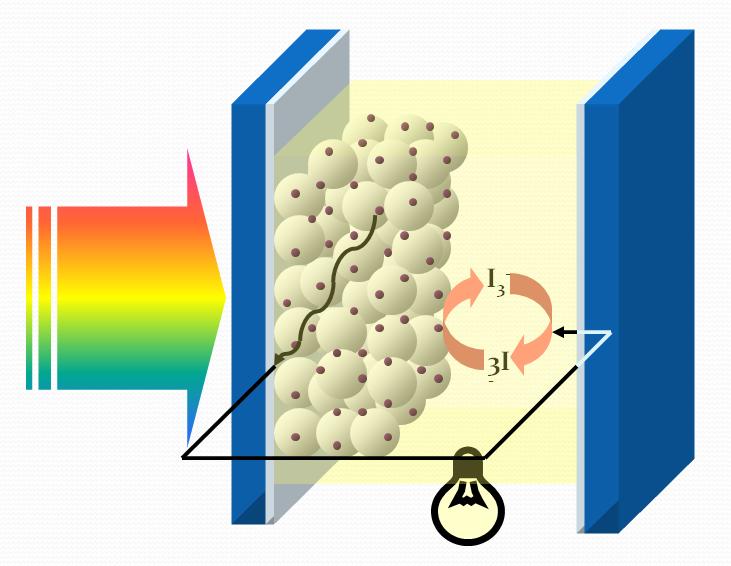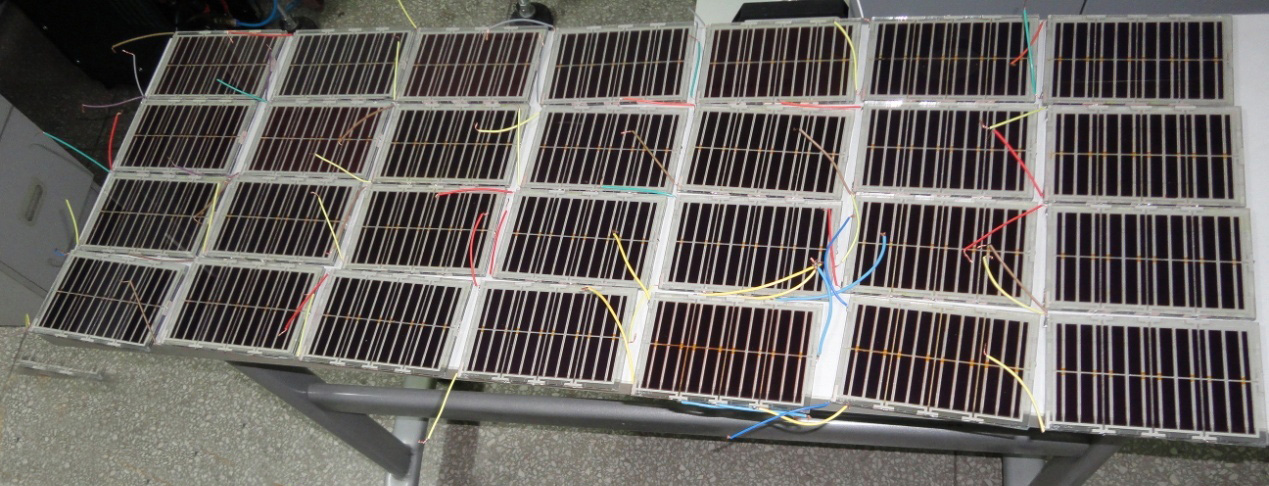Dye Sensitized Solar Cell
The synthesis of nanocrystalline solar energy materials & the assembly of photoelectric devices, achieving the conversion from solar energy to electric energy.——Dye-sensitized solar cells
As a new type of photovoltaic conversion device, nanocrystalline dye-sensitized solar cells (DSCs) have been extensively investigated since first reported by Michael Grätzel in 1991. The working process of DSCs integrates physics and chemistry, including light absorption, charge carrier production, charge transportation and electrochemical reaction. Specifically, after the sunlight is absorbed by the dye molecules adsorbed on the photoanode, the electrons of dye molecules transfer from ground state to the excited state and then are injected into the photoanode. The injected photogenerated electrons are transported to the external circuit by the photoanode materials. The dye molecules losing the electron are renewed by the reducer in the electrolyte, while the oxidized species in the electrolyte diffuses to the counter electrode and is reduced (Figure 1). This new photovoltaic cell is environmentally friendly, easy fabrication and low cost. Especially it has prominent superiority in price. The cost estimation suggests that DSCs can be put into actual application so long as the photoelectric conversion efficiency could reach 5%. Up to now, the liquid nanocrystalline DSCs have give an efficiency as high as 13% (50 mW/cm2, AM 1.5).
Our group has made comprehensive investigations around all the components of nanocyatalline DSCs, including (1) the synthesis of organic dyes with widely spectral response; (2) preparing nanocrystalline TiO2 films with large specific surface and high porosity, and ordered photoanodes based on TiO2 nanotube array; (3) as for the electrolyte, developing non-corrosive & non-absorbing organic redox couple, ionic liquid, LiI/acetamide phase transition electrolyte and gel electrolyte. To solve the leakage and volatilization problems of the liquid electrolyte, we also make numerous studies in solid-state nanocrystalline DSCs. The solid or quasi-solid state electrolytes with high ionic diffuseness and conductivity are developed and the efficiency of the fabricated small solid-state nanocystalline DSCs has reached the international level of 5.48%. (4) the preparation of high activity counter electrode with low platinum loading, and NiS counter electrode, etc; (5) the development of new cell structure, such as fibrous cell, photoelectric/thermoelectric composite tandem cell; (6) flexibility is another important issue of the nanocrystalline solar cells, about which we prepared the ZnO porous electrode at room temperature, FTO/PET flexible electrode, flexible carbon counter electrode and low-cost, flexible polyaniline/carbon composite counter electrode, and various flexible electrodes suitable for low temperature production. In addition, our group pays much attention to the assembly process of DSCs with large area. Base on the theoretical designs and abundant experiments, we have succeeded in assembling large cells with 10 x 15 cm2 area in the laboratory (Figure 2). Trials on more large size and new packaging technology are ongoing.
Figure 1 The sketch map of nanocrystalline dye-sensitized solar cells.

Figure 2 The practicality of nanocrystalline dye-sensitized solar cells with large area.

Every part of the DSCs contains rich contents: the synthesis of novel dyes or using different sensitizing methods to widen the response spectrum; the improvement of the nanocrystalline film production technology to optimize the electron injection and charge transportation process; further solving the packaging problems of the liquid electrolyte or continuing to enhance the efficiency of the solid-state DSCs; developing counter electrode materials with low-cost and high catalytic activity.
To a great extent, a small solar cell can slow down the coming energy exhaustion. There are still many interesting scientific issues unsolved in this system. Welcome all of youth interested to participate in our team.
See the website “industry progress” for more information (Image from solarisnao-com).
News & Events
- A new world record 13.6% efficiency of CZTSSe solar cells by Institute of Physics, Chinese Academy of Sciences
- Congratulations for the graduation of Dr. Zhang and four undergraduate students
- Spring Hiking
- Na Zhou successfully defended her doctoral dissertation
- Our group joined the activity held by IOP labour union
